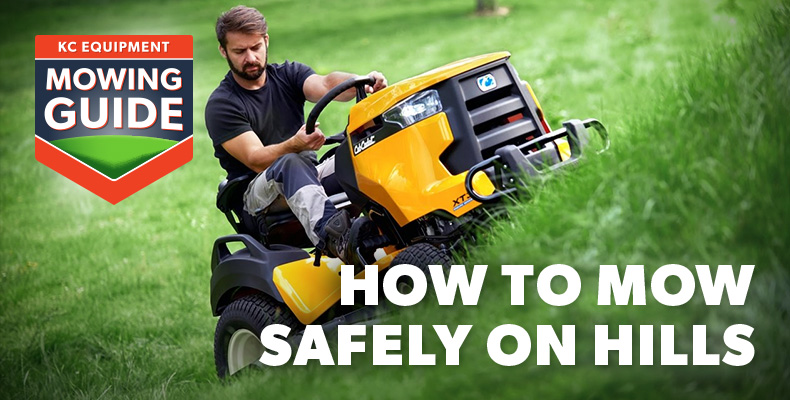An Introductory Guide To Mowing Hills And Slopes Safely And Efficiently
- Safety when you're mowing should always be front of mind, and no situation presents more risk to an operator than mowing hills. There is a way to mow hills safely, however, and everything you need to begin is covered in the following four sections - Hill Steepness and Slope Rating, Standard Approaches To Mowing Hills, The Golden Rules Of Safe Hill Mowing, and finally Equipment Options For Safe Hill Mowing.
1. Hill Steepness and Slope Rating
To begin, it's important to know that there are two common ways inclines are measured – grade and degrees. With some equipment, the grade is quoted instead of degrees. It pays to be mindful when looking at manuals or brochures, to see which is being used. Degrees are just a standard measure of angle, while grade is a different type of measurement (mainly used for roads), where 100% grade = 45°. For this article we'll only use degrees.
Manufacturers often provide a slope angle rating, in degrees, which shows the steepest angle a mower can safely operate on. 10° is a hill. 20° is a steep hill. 25° is a very steep hill. A 30° slope you may have trouble even walking up, especially on a slick surface. For reference, staircases are usually built 30-35°.
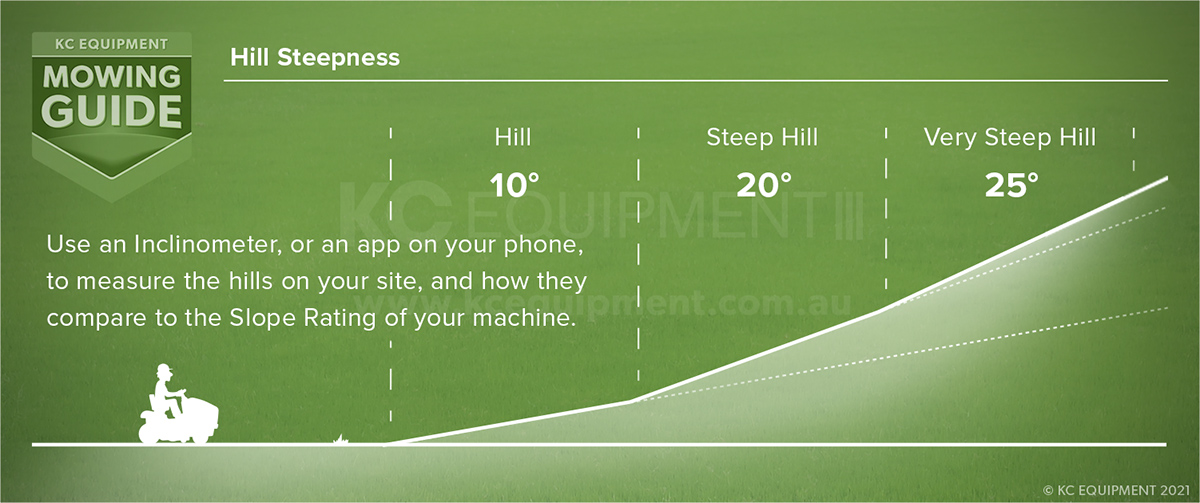
KC Equipment recommends taking some time to walk your site, and measure the steepness of all of the hills and inclines that will need mowing. The best way to do this is with an inclinometer. These are available from hardware outlets, and can also be mounted to your mower. Alternatively, apps such as Clinometer, or the built-in Measure (on iPhone) will let you measure an angle. Lay your phone on a long straightedge or piece of timber to get a better reading.
You won’t know if your hills are safe to tackle unless you know how steep they are!
2. Standard Approaches To Mowing Hills
There are two standard approaches when tackling hills - mowing perpendicular to the incline (or up and down the hill), and mowing parallel to the incline (or across the hill):
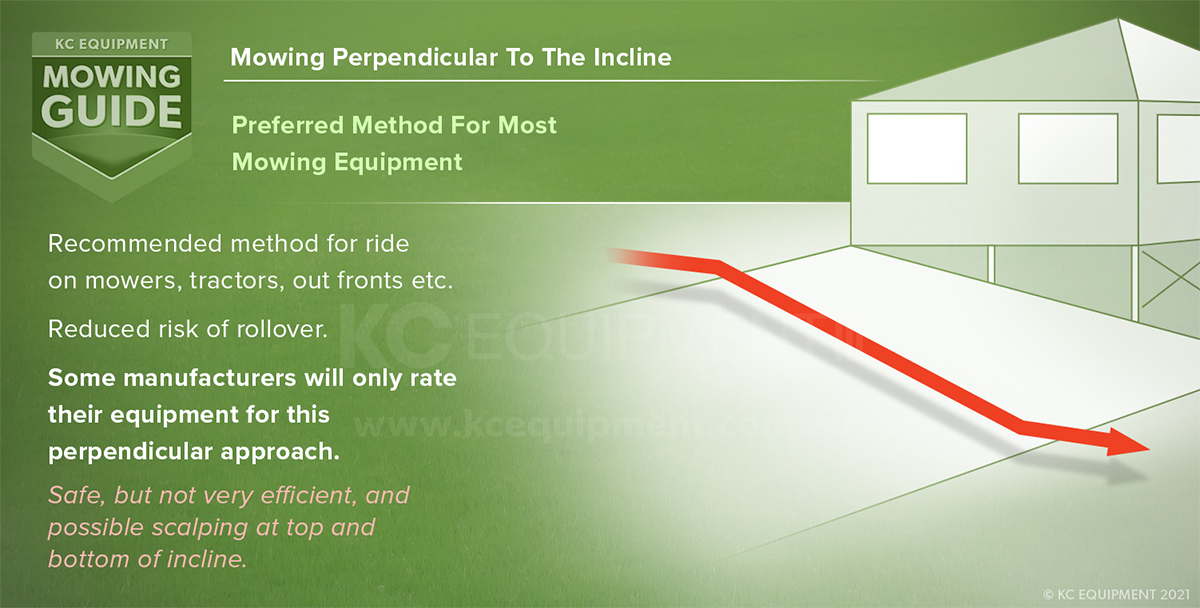
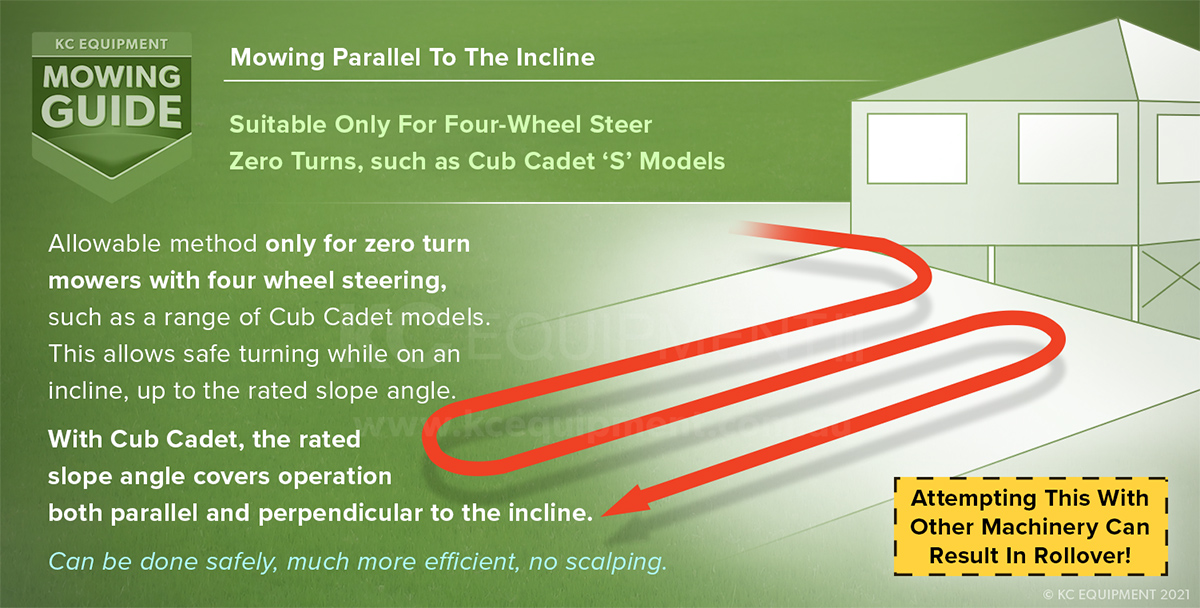
Mowing parallel to the hill can be much more efficient, but it is not recommended for tractors, zero turn mowers with lap bars, ride on mowers etc. - basically anything that doesn't have four-wheel steering.
Additionally, when mowing perpendicular to the hillside, always mow downhill if you have the option. It's always better to go the long-way around and circle around a hill if it means you can avoid mowing uphill. Mowing up a slope puts far greater strain on equipment, and increases the risk of losing traction.
Don't mow across the face of a hill unless your mower has four-wheel steering and is rated to do so - as with a Cub Cadet 'S' Model Steering Wheel Zero Turn Mower!
3. The Golden Rules Of Safe Hill Mowing
There are some golden rules that apply to safe hill mowing, regardless of the kind of mower you're operating or the approach you're taking:
SHIFT THE MOWING DECK UP
Hills don’t need to be mowed at the same height as the rest of your grass. Take the time to adjust your deck.
Go Slow, Avoid Sharp Movements
Lowest gear, RPMs up. Where possible, brake with the transmission and not the brakes or parking brake to avoid locking up (unless in an emergency).
Avoid Starting Or Stopping On A Slope
Don’t Shift To Neutral, Don’t Coast
Test Your Brakes Before You Start On The Hill
If you do need your brakes in an emergency situation, you should be sure that they work. Testing your brakes only takes a moment, and it’s a great habit to get into.
A Smooth Hill Is A Safe Hill
Fill in ruts, holes and bumps on hills where possible, to make the hill smoother.
Don’t Mow Near A Drop-Off
The risk is too great.
If you have ROPS, ALways Put It Back Up
If your mower has a foldable Rollover Protective Structure, then always take the time to set it back upright after clearing an obstacle - ROPS won’t do you much good folded over!
Don’t Mow Hills When Wet!
The most important rule of all! In addition to the risk of slippage, waterlogged or muddy turf will often give way or behave unpredictably when compacted by the substantial weight of a mower.
Remember! No hill is so important it’s worth mowing when wet. Always wait for it to dry!
4. Equipment Options For Safe Hill Mowing
Next up we'll take a look at the range of hill mowing equipment on offer at KC Equipment, in order of Manufacturer Slope Rating:
Wheeled String Trimmer
Slope Rating N/A
There's just one model, and it's the Cub Cadet Wheeled String Trimmer - click on the link for more information.
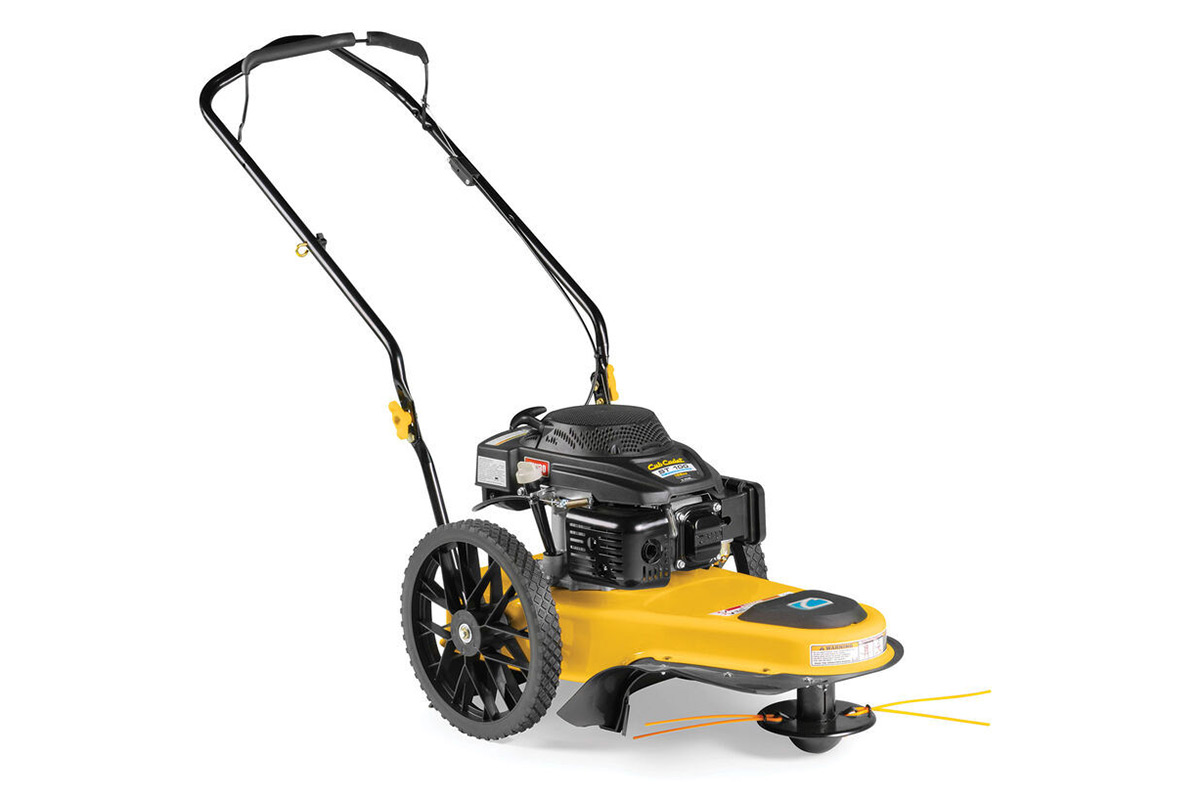
Starting simple, if you have a small verge, or a patch of hill that gets choked up with tall grass, this may be all you need.
- Lighter than a push mower.
- Can tackle much thicker material.
- Basically a heavy-duty brushcutter on wheels. Think of it like a mini-slasher.
All-Wheel Drive Husqvarna Riders
Slope Rating 10°
The two specific models we're referring to here are the Husqvarna R 316TSX AWD Rider and the pictured Husqvarna
RC 320TS AWD with its integrated catcher.
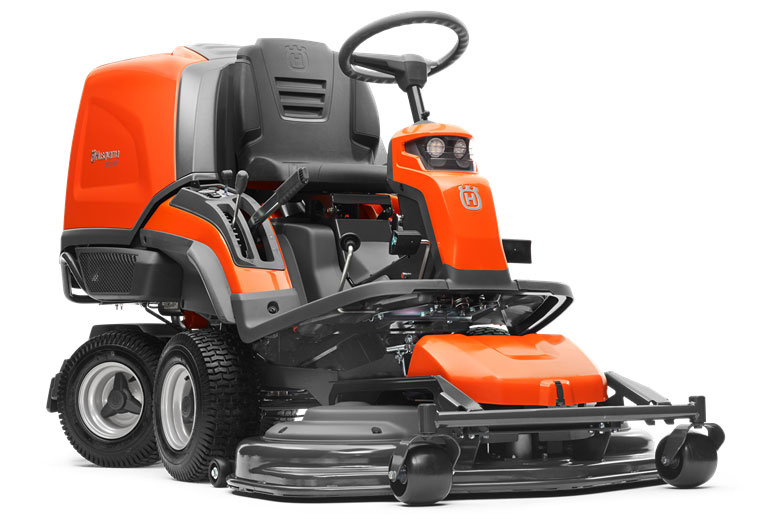
Rated to 10° by the manufacturer, these are very capable AWD machines with interesting features for specific uses.
- AWD offers more traction in slippery conditions.
- Pivoting rear axle allows maximum traction in uneven terrain.
- Available with and without an integrated catcher.
Ride On Mowers With Diff Locks
Slope Rating 15°
There's a wide range of ride on models on offer from KC Equipment with this feature - beginning with the Rover Lawn King 21/42, Cub Cadet Enduro XT2 LX 42 EFI and Cub Cadet Enduro XT2 LX 46, and Husqvarna TS 142TXD and Husqvarna TS 242TXD.
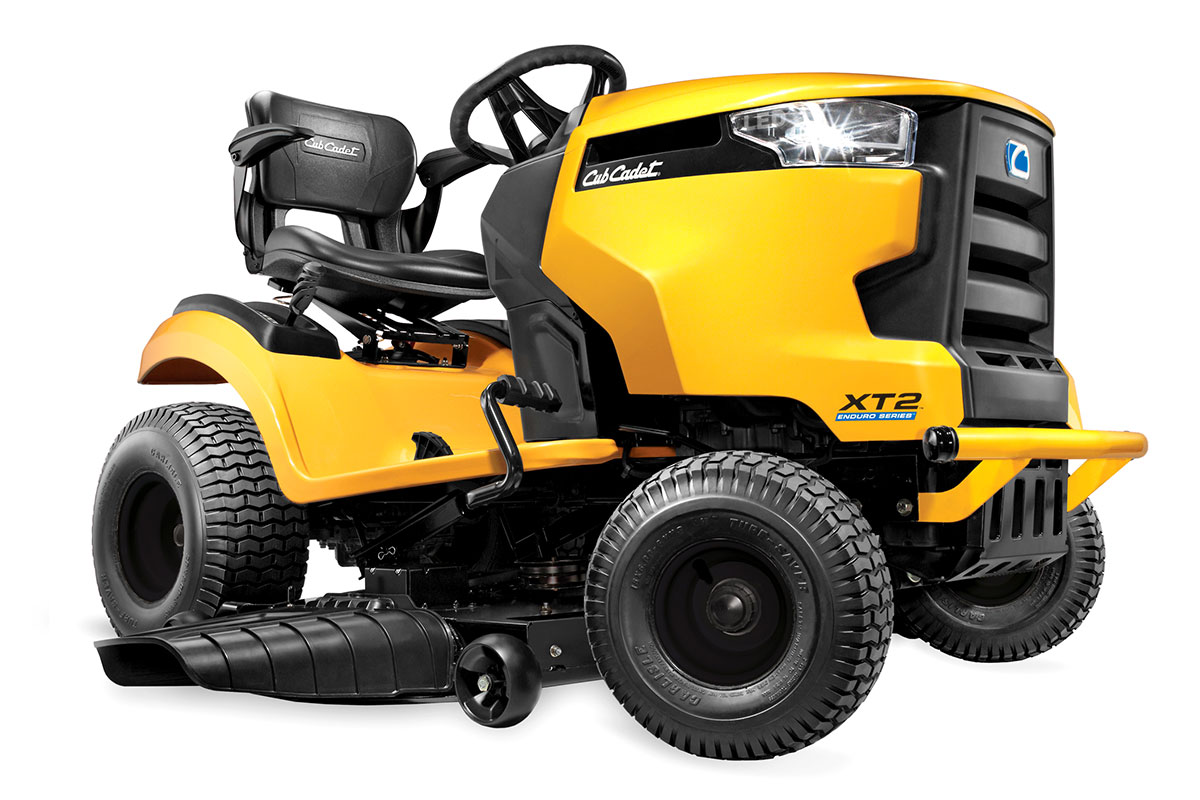
Suitable for mowing perpendicular to the incline. Most ride ons are rated to 15°. For hill mowing, we’d recommend a differential lock ride on over entry-level models that don’t have a diff lock.
- Cub Cadet and Rover models use an auto-diff lock, that engages when it detects slip. Husqvarna uses both an auto-on and a push-button engagement.
- Best used mowing down slopes, up to the 15° rating.
Out Front Mowers
Slope Rating Varies
The mowers we're referencing here are the Iseki SF SF310 and SF370, the Kubota F Series, and the Husqvarna P 524 and Husqvarna P 525D.
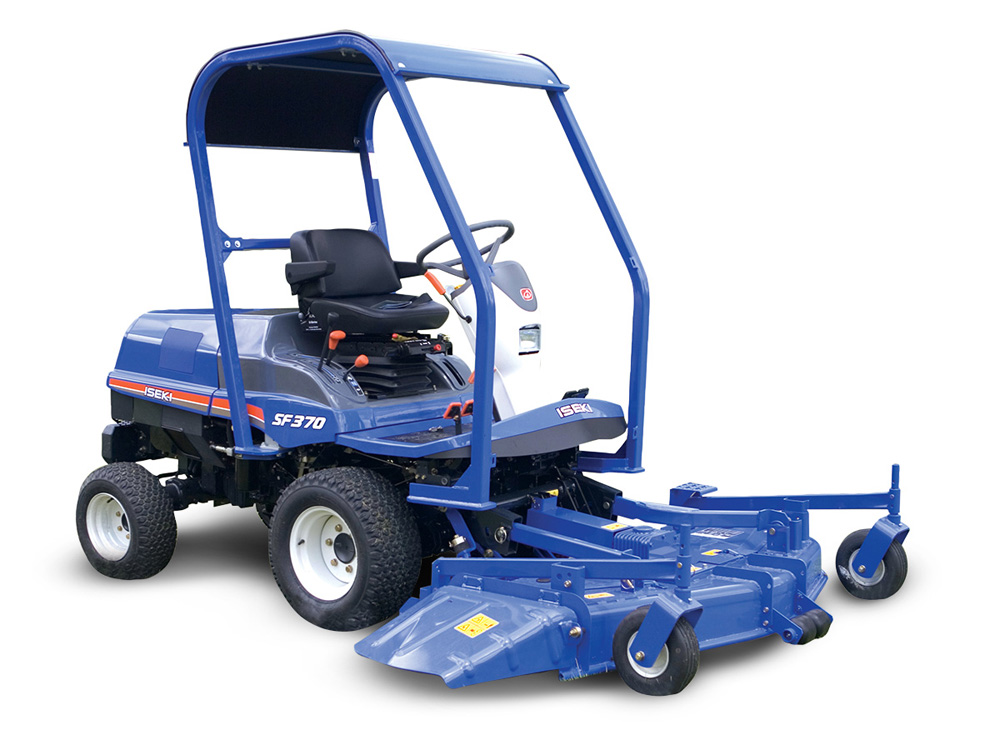
We’d recommend out front mowers, especially the Iseki SF Series, as one of the safest options around for slope mowing.
- Most out fronts feature a low centre of gravity, ROPS, and plenty of power for steep inclines.
- Iseki, Jacobsen and Husqvarna models all feature some kind of AWD system.
- Slope ratings vary, and some conservative ratings from the manufacturers cloud the safety level actually on offer.
Zero Turn Mowers With Four-Wheel Steering
Slope Rating 20°
Cub Cadet's unique synchro-steer four wheel steering is present on all of the models that have a steering wheel. Entry-level models in this range include the Cub Cadet RZT S Series S 42, Cub Cadet RZT S Series S 46, and Cub Cadet Z Force SX 48. Commercial options begin with the Cub Cadet Pro Z 100 Series 148S.
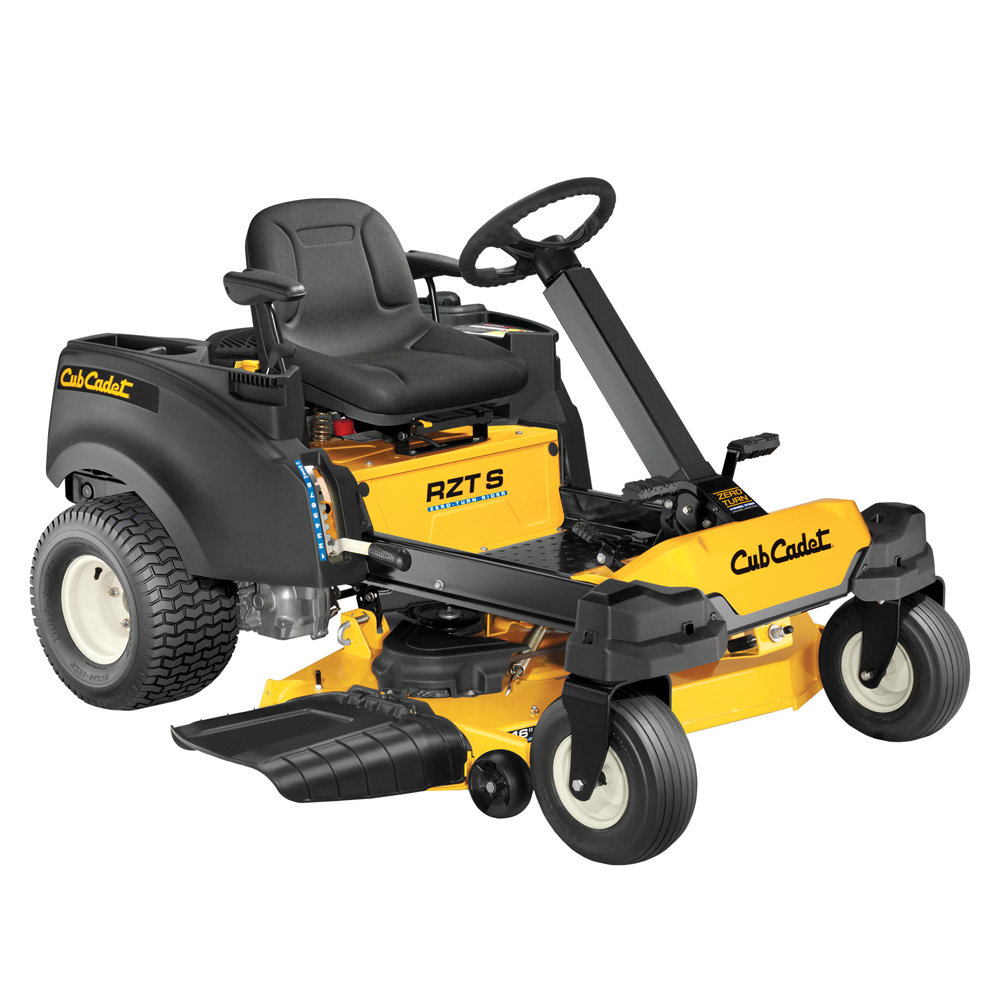
All mowers from Cub Cadet that have a steering wheel also feature a four-wheel synchro-steering system.
- With these mowers, all wheels turn when steering is engaged, meaning no lift or loss of traction on slopes.
- Slopes can be mowed either perpendicular or parallel to the incline, up to a massive 20° slope!
Dual Wheel Zero Turn Mowers
Slope Rating 25°
There's two models available - the Cub Cadet Pro Z 900 Series 972SD and the Pro Z 900 Series 972SDL, which adds a self-levelling seat, amongst other features.
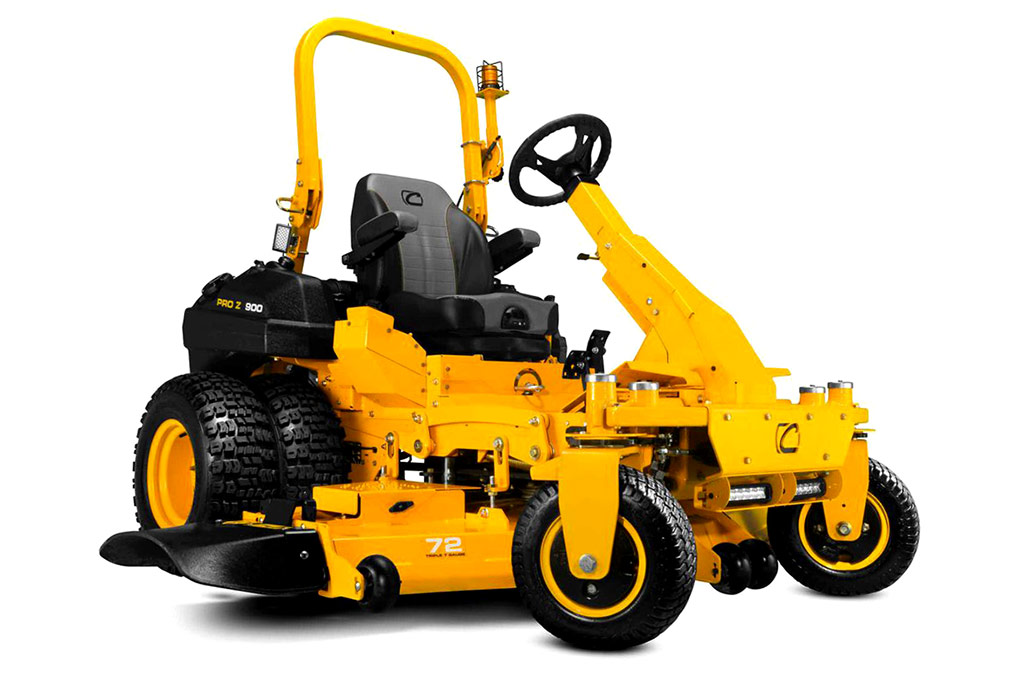
Cub Cadet now have two models in their range – the 972SD and 972SDL – that are dedicated hill tacklers.
- Six-wheel design – dual rear wheels on each side provide unmatched stability.
- Weighted front wheels.
- Designed specifically for hill mowing - up to an incredible 25° - and the safest possible option KC Equipment recommends.
Hill Mowing Videos
To close out this Mowing Guide article, please find below a few videos that highlight some the equipment mentioned above.
If you have any questions around safe hill mowing, please get in touch! Visit our Contact Us page to enquire online, or for details on calling or visiting your local branch in QLD or NSW. Thank you!
KC Equipment services the Agricultural, Golf, Sports, Commercial and Residential grounds care industries with a huge range of equipment from the world’s leading manufacturers, including Massey Ferguson, Iseki, Kubota, and Jacobson. With over thirty years of experience, branches in Yatala, Lismore and Murwillumbah, and a huge parts and supplier network, KC Equipment can assist you with all aspects of your operation.
KC Equipment – for everything in your shed.
For any media enquiries, contact Jean-Paul Mollinger, Marketing Coordinator, on [email protected]
KC Equipment wishes all our fellow Australians the best in these uncertain times. To find out the latest on our status during the COVID-19 response, please visit our Contact Us page.

